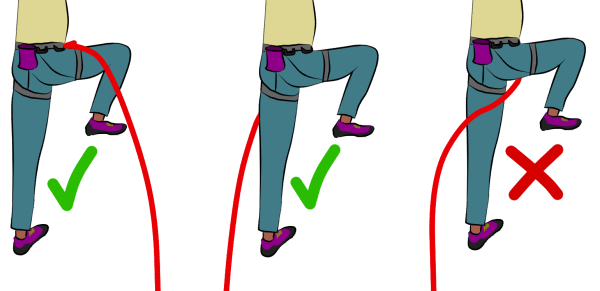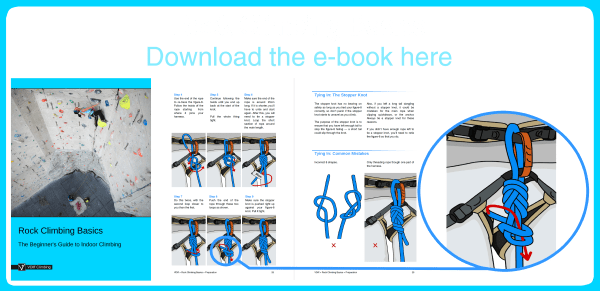'How To Lead Climb' is part of the book - Rock Climbing Basics: The Beginner's Guide.

Before you lead climb, there are 3 other things you need to do which you wouldn't do if top roping:
1) Stack the rope
2) Close the system
3) Attach quickdraws to your harness
How To Stack a Climbing Rope
You'll need to 'stack' the rope before every lead climb so that it will feed out without tangles while you're climbing.
Beginning at one end, simply feed the rope into a pile on top of your rope bag, or a clean area of the ground. The climber ties into the top end of the rope.
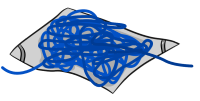
Top Tip
If you are storing your rope for a while, or carrying it somewhere, it can be best to coil it instead.
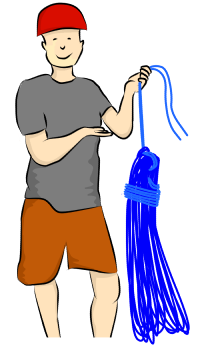
Closing the System
Tie a knot in the end of the rope. This ‘closes the system’, so it is impossible to accidentally lower your partner off the end of the rope.
The rope which the gym provides should be long enough anyway, but it’s a good habit to get into if using your own rope.
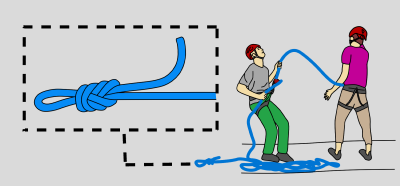
How To Attach Quickdraws To Your Harness
Some indoor walls have quickdraws already attached to the wall, but if yours doesn't, you'll need to bring your own.
Clip half of them to the gear loops on the left side of your harness and the other half on the right side. Clipping them to your gear loops with the bolt-end carabiner will make it easier when you come to use them.
Make sure you bring enough quickdraws with you. You'll need one for each bolt, plus a couple of spares in case you drop one half way up or if a mystery bolt appears that you couldn't see from the ground.
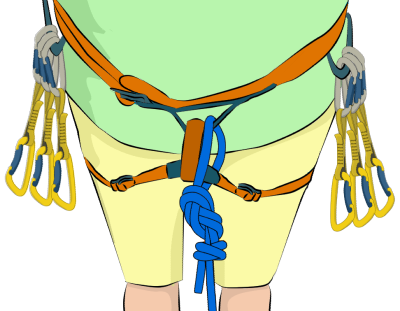
While you lead climb, there are 4 other things you'll need to do that you wouldn't do if top roping:
1) Clip quickdraws to bolts
2) Clip the rope into the quickdraws
3) Clip the rope into the top anchor
4) Pull the rope back down when you finish
How To Lead Climb: Clipping Quickdraws To Bolts
If the quickdraws are not already attached to the wall, you'll need to clip one on first. Simply clip the bolt end of your quickdraw to the bolt in the wall. It doesn't matter which way it faces.
Obviously, if you fall before clipping the first quickdraw, you'll land back on the ground.
How To Lead Climb: Clipping The Rope Into Quickdraws
The easiest way to clip a quickdraw is to place your fingers around the back bar of the carabiner, then use your thumb to flick the rope through the gate. The pressure of you pushing the rope on to it will open the gate; you don't need to open it with your fingers.
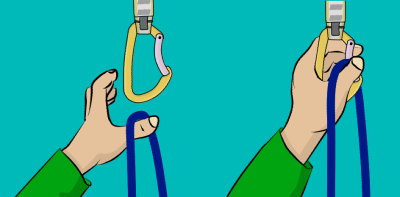
If you're clipping with your other hand, you'll need to hold the back bar with your thumb and use your fingers to flick the rope through instead.
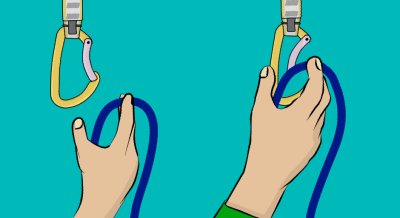
Another way is to steady the carabiner with your middle finger and then flick the rope through with your thumb.
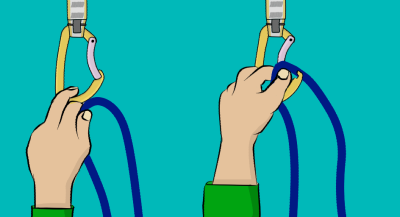
Warning! Back Clipping Quickdraws
The rope needs to be clipped through the quickdraw so that the end of the rope attached to you comes out of the front side of the quickdraw. If you fall, the rope will stay clipped through the carabiner.
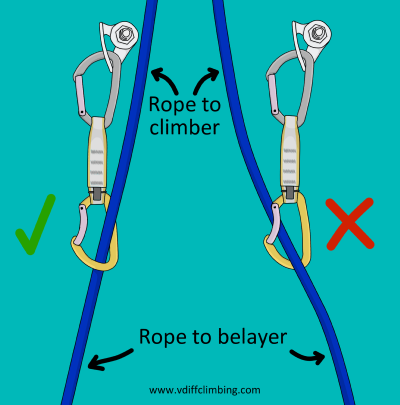
If you clip it the wrong way round, the rope could snap through the carabiner's gate if you fall. This would unclip the rope from the carabiner. This is known as 'back clipping'.
If you're belaying a leader, keep an eye out for them accidentally back clipping, and let them know if they have!
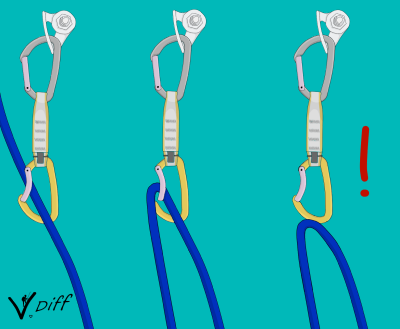
Warning! Cross-Loading Carabiners
Make sure your carabiners do not become 'cross loaded' when you climb (loaded sideways). Also make sure the carabiner's gate has snapped shut after you've clipped the rope through it. Either of these will make your carabiner much weaker.
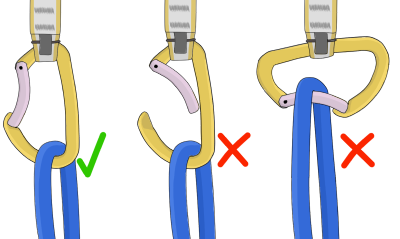
Warning! Skipping Quickdraws
You need to clip every quickdraw to stay safe.
Never miss any out.
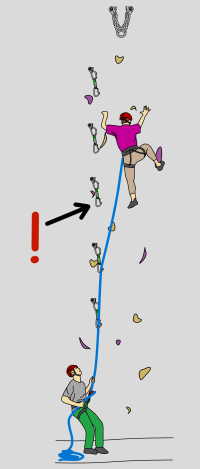
Warning! Z-Clipping
You’ll end up with a z-clip if you take the rope from the beneath the last quickdraw and clip it to the one above.
Make sure to clip them all in order.
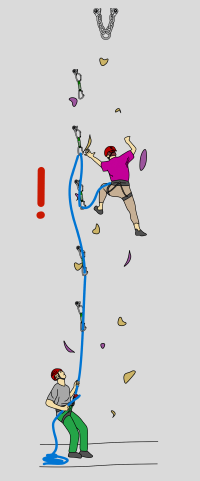
How To Lead Climb: Clipping The Top Anchor
Once you get to the top of the wall, you'll need to clip the rope through the top anchor. Different walls have different systems for this – some have two snapgate carabiners, some have one or two screwgate carabiners that you'll need to unscrew first. Ask one of the staff before leading if in doubt.
Once you've clipped your rope through the top anchor, you can be lowered down in the same way as if you were top roping.
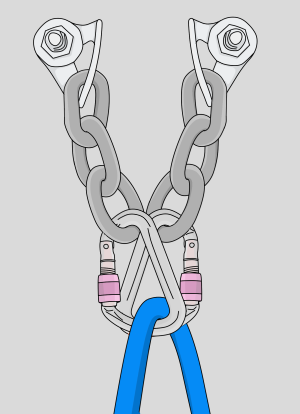
Incorrect Top Anchor Setups
Clipping your rope through the same carabiners as another rope will cause the ropes to rub together when you lower down.
This will damage the ropes, making them less safe for future use.
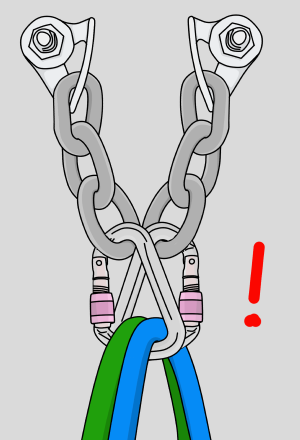
Only clipping half of the anchor is dangerous because you will be risking your life to a single carabiner.
Clip them both.
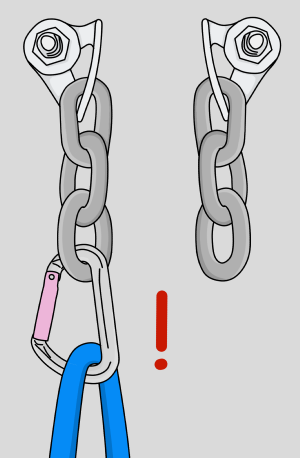
Lowering Down
If you've attached your own quickdraws on the way up, you'll need to collect them on the way down.
Simply lower down, unclipping them from both the bolt and rope, and then clip them back to your gear loops. The belayer will need to stop lowering you at each bolt so you have time to do this.
Many gyms have quickdraws permanently installed, especially on overhangs. In this case, just lower down the same as for a top rope.
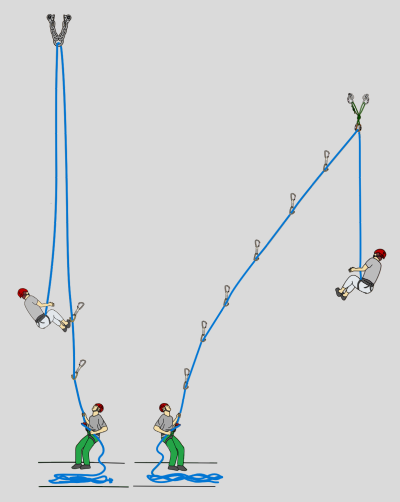
Pulling the Rope Down
When you're pulling a lead rope down, shout 'rope' before it falls, so that everyone around you is expecting it – a falling rope in the head hurts!
Make sure to pull the rope through so that the falling end drops down through the clipped quickdraws – this will slow it down and make it safer.
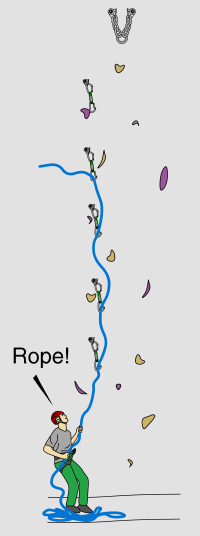
Lead Climbing: Understanding Fall Potential
Leading for the first time can be pretty scary. Suddenly you're exposed to a much greater fall potential than on a top rope. The consequence of a fall while leading is more serious than when top roping, as you can fall much further. This increases your chances of hitting something (such as a large hold) as you fall.
If you fall while below a quickdraw you've just clipped, the fall will be similar to falling on top rope, as the rope is running through the carabiner above you.
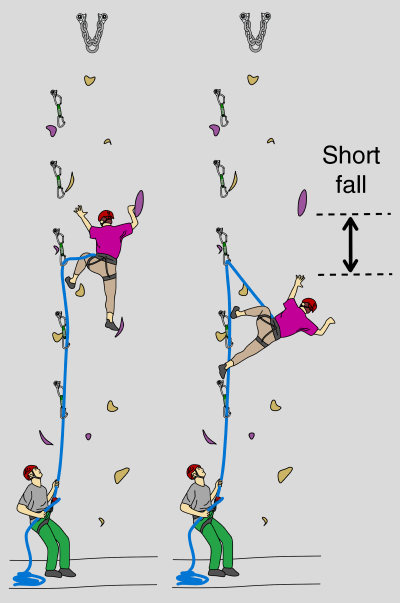
But if you fall when above the last quickdraw you've clipped, you'll fall below it, about the same distance as you were above it, or a little bit further (as the rope stretches to absorb the force of the fall).
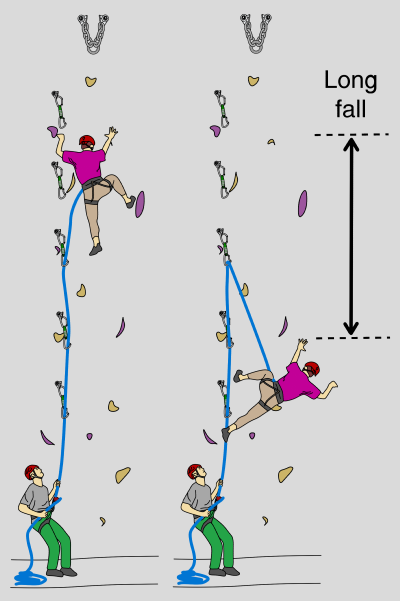
It's important not to clip quickdraws too soon. It can be tempting to pull through meters of rope to clip way above your head. But doing this means there's a lot of slack rope in the system so you'll fall a lot further if you slip while clipping.
Instead, wait until the quickdraw is between your shoulders and waist, then clip it. Not only will you not fall as far if you slip, it's also less strenuous and quicker.
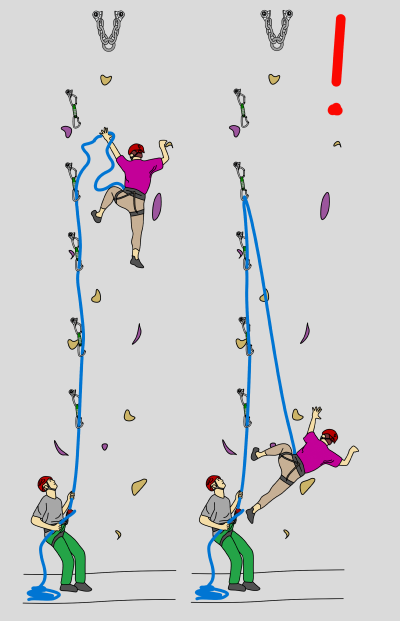
Top Tip
Try to clip from a resting position. It's much easier to clip a quickdraw while you're hanging from a big hold on a straight arm than from a tiny hold on a bent arm.
Lead Climbing: Where To Position the Rope
When lead climbing above a quickdraw, make sure the rope is running over the side of your leg. If you fall with the rope between your legs, it can flip you upside down, causing you to hit your head on the wall and get 'rope burn' behind your knees.
